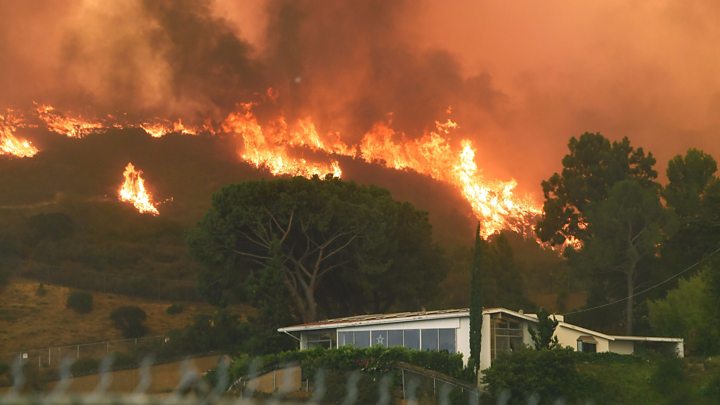Despite evidence showing that poor air quality is linked to cardiac events, many people still remain unaware of the dangers of air pollution
05/23/2018 / By Zoey Sky

Did you know that poor air quality can endanger both your respiratory and cardiovascular health?
According to a study, high levels of fine particulate matter (PM 2.5), or tiny pollution particles, are linked to a significant increase in emergency department visits due to heart- and lung-related illnesses and stroke.
However, despite this alarming figure, a nationwide U.S. survey has revealed that only a handful of patients with heart conditions know about the risks associated with air quality.
Data from the analysis of areas affected by the harsh 2015 California wildfire season showed that after only a day of being exposed to smoke, the recorded number of emergency room visits for heart attacks and other cardiac events and symptoms went up by 15 percent overall. At least 42 percent of the cases were for individuals older than 65.
For stroke and other cerebrovascular emergencies, the visits went up by about 17 percent overall, with 22 percent for older patients.
Ana Rappold, a senior study author from the Environmental Protection Agency’s (EPA) National Health and Environmental Effects Research Lab (NHEERL), said, “Unlike places that have chronic exposure to poor air quality where we can educate people about the health risks, wildfires happen at unexpected times.” She continued that wildfires have become a major cause of short-term exposure to polluted air and that the public needs to know how exposure to wildfire can affect their overall health.
Rappold and her team cautioned that large-scale wildfires might be more frequent through the end of the century. Areas like California will be affected by these wildfires, which are comprised of pollutants like ash particles, carbon monoxide, and nitrogen dioxide that are linked to heart and lung problems. (Related: Air pollution increases risk of heart disease and stroke, study says.)
Wildfire also contains PM 2.5, or tiny particles that are smaller than 2.5 micrometers. Burning – like in indoor cooking fires, motor vehicle exhaust, and wildfires – produces PM 2.5. These particles are small enough to enter the bloodstream via the lungs when inhaled, and they are associated with clotting issues, heart rhythm disturbances, and inflammation.
It can be especially serious for the elderly
The study findings revealed 361,000 cardiovascular, 15,500 cerebrovascular, and 230,000 respiratory diagnoses. The emergency room visits for cardiovascular health-related concerns were linked to wildfire smoke density for all adults and were more prevalent among patients older than 65. Brain and lung issues were also more significant in older adults, especially on medium- and dense-smoke days.
Dr. Wayne Cascio, director of the EPA’s NHEERL and one of the study’s co-authors, cautioned that steps must be taken to ensure the health of the country’s aging population who suffer from various conditions such as diabetes, obesity, and associated heart and lung diseases. Paired with this is an increasingly alarming number of acres that burn yearly.
Dr. Cascio continued that there is also an increasing number of individuals trespassing on acres with a “high likelihood of burning.” These people are in danger of wildfire exposure.
Meanwhile, the results of a separate study by a team of researchers at the Centers for Disease Control and Prevention (CDC) revealed that unlike individuals with heart disease, patients with lung disease are more likely to know about these risks during poor air quality alerts.
Maria Mirabelli, from the CDC’s Asthma and Community Health Branch and lead study author, commented that targeted public health messages about air quality could effectively improve awareness about alerts. These public health messages can also help encourage those who are at risk to act accordingly and prepare for “periods of unhealthy air quality.”
Mirabelli advised that the public discuss air quality alerts with a health professional to come up with strategies to minimize air pollution exposure.
She concluded that the best way to minimize your exposure to air pollution is by avoiding busy roads when biking, exercising or walking outdoors.
Tips to protect your family from wildfire smoke
Follow the tips below to keep your family safe from dangerous wildfire smoke:
- Regularly check the news and local smoke warnings – Always stay informed. Even if your home is hundreds of miles away from the location of a wildfire, deteriorating air conditions and the direction of the wind can send smoke your way. It may not look it, but the air you’re breathing may not be at a healthy level. Check the daily air quality at Airnow.gov.
- Ensure that your home is airtight if there’s smoke in your area – If you notice smoke in the atmosphere, keep your home closed up. Close all the windows, check your air filters and avoid unnecessary exposure to outside air. If you need to go outside, change your clothing immediately once you’re indoors.
- Try to improve your indoor air quality – Place some houseplants around your home since they can help purify indoor air. Houseplants emit oxygen and absorb carbon dioxide. Don’t burn candles or smoke indoors.
You can read more articles on how to improve air quality and prevent pollution at Pollution.news.
Sources include:
Tagged Under: air quality, air quality risks, ash particles, asthma, brain health, carbon monoxide, cardiac events, cardiovascular disease, environment, environmental damage, environmental protection, fine particulate matter, heart disease, heart health, lung problems, nitrogen dioxide, particulate matter, PM 2.5, pollutants, polluted air, wildfires
RECENT NEWS & ARTICLES
COPYRIGHT © 2017 ENVIRON NEWS




















